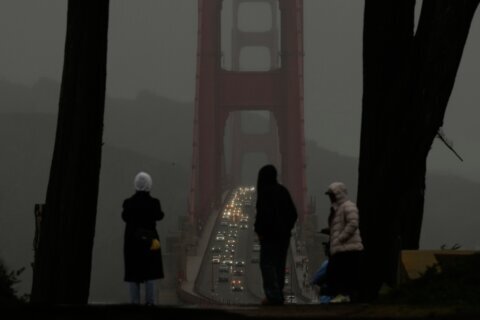▶ Watch Video: How researchers seek to perfect the study of time
As 2024’s daylight saving time starts, most of the U.S. will change the time on clocks — but there are two states and several territories that do not observe daylight saving time.
Come Sunday, people across the country will move clocks forward an hour and lose an hour of sleep. Daylight saving time ends, with clocks moving back an hour, on Nov. 3. The twice annual clock change isn’t observed everywhere in the U.S.
Full list of states, territories that don’t do daylight saving
According to the Department of Transportation, which oversees the nation’s time zones, there are two states and five U.S. territories that do not observe daylight saving time.
- Arizona (with the exception of the Navajo Nation)
- Hawaii
- American Samoa
- Guam
- Northern Mariana Islands
- Puerto Rico
- U.S. Virgin Islands.
Indiana only adopted daylight saving time beginning in 2006.
Why doesn’t every state have Daylight Saving Time?
Daylight saving time was enacted as a legal requirement by the Uniform Time Act of 1966, according to the Bureau of Transportation Statistics. Under the act, states can exempt themselves from daylight saving time. They do not require permission from the Department of Transportation to opt out from daylight saving time. While states can opt out of observing daylight saving time, they cannot choose to be on permanent daylight saving time.
States also cannot independently change time zones or the length of daylight saving time, which is determined by the federal government.
The states and territories that have chosen to opt out of daylight saving have done so for a variety of reasons.
Arizona
Arizona made the decision not to observe daylight saving time in 1968, according to the state library.
The state made the decision based on the hotter temperatures and desert climate in Arizona, CBS affiliate KOLD reported.
When the clocks spring forward, sunset is an hour later. That would keep people in the state out later during hot months.
It also affects energy costs, KOLD reported.
“The reason for this is the longer the sun was up at night when everyone was home, the more energy households would use during the hot summers,” according to KOLD.
Arizona Rep. Debbie Lesko addressed the issue in a 2022 Congressional hearing.
“In Arizona it is very hot in the summer. In fact, a lot of our workers that work on rooftops, doing new roofs, or on the highways, they actually work in the middle of the night, because it is just too hot,” Lesko said. “And so any time you change anything to Arizona, Arizonans are going to be upset, and it will have consequences that may, that people from the East Coast may not think about.”
The Navajo Nation, which spans parts of Arizona, Utah and New Mexico, does follow daylight saving time.
Hawaii
According to CBS affiliate KGMB, Hawaii’s officials in 1967 determined that the state didn’t need to disrupt its schedules to account for changes in daylight. Hawaii’s proximity to the equator means it gets enough sunlight through the day, regardless of the time of year.
Fighting to end clock changes
A 2022 CBS News/YouGov poll found that nearly 80% of Americans supported changing the current system. The idea of permanently shifting an hour of daylight from the morning to the evening appealed to 46% of Americans while 33% wanted the clock to run out on daylight saving time.
Given the dislike of time changes, several states across the U.S. have tried to end daylight saving or adopt it permanently.
Colorado in 2022 passed a law calling for year-round daylight saving, but the text of the bill states that daylight saving time would only become adopted year-round if Congress enacted a federal law allowing states to remain on daylight saving time all year.
In Massachusetts, state officials in October heard testimony this October on two bills: one that aims to make daylight saving time permanent and another that would end daylight saving time and restore standard time year-round.
There have also been federal efforts around changing daylight saving. Under a 2022 bill, which stalled in the House, daylight saving time would have been made permanent. The bill was reintroduced in 2023, and is still in committee.







